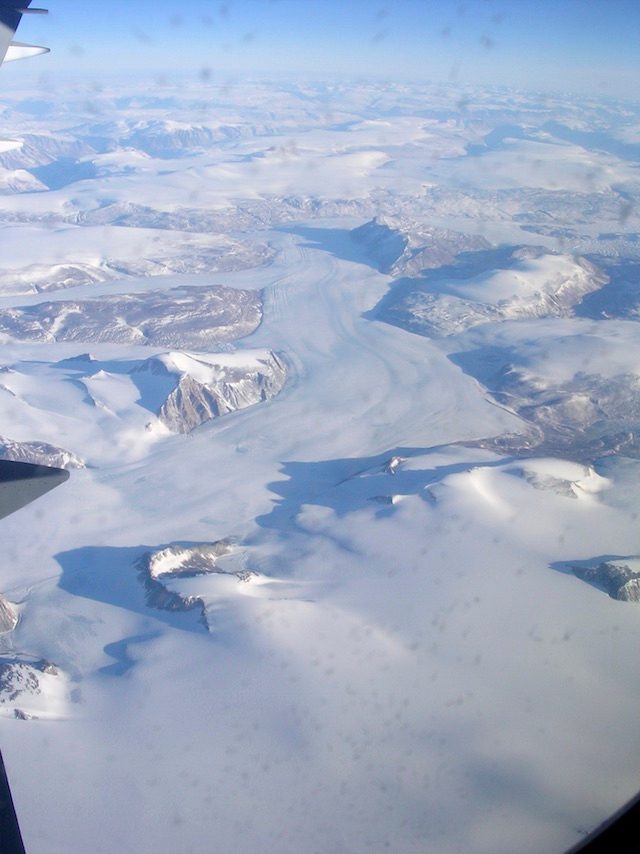SUMMARY
This is AI generated summarization, which may have errors. For context, always refer to the full article.

PARIS, France – Greenhouse gases were the driving force behind global glacier retreat at the end of the last Ice Age, echoing current climate change, according to a study published Friday.
More than 11,000 years later, the researchers say, global warming is on track to wipe out 80% to 90% of remaining glaciers within a few hundred years unless carbon dioxide emissions are held in check.
Such an outcome would push sea level rise and rob hundreds of millions of people in Asia and South America of a critical source of water.
Using new techniques to resolve an old debate, researchers showed that it was a 55% increase of CO2 in the atmosphere – from 180 to 280 parts per million (ppm) – over some 7,000 years that melted the world’s glaciers to a level that remained stable until the start of our industrial era.
Higher levels of green house gasses, such as CO2, trap more of the Sun’s heat on Earth causing global temperatures to rise.
Up to now, scientists disagreed on the cause of Ice Age glacier decline, with some attributing it mainly to solar radiation and regional influences such as ice sheets and ocean currents.
A team of scientists led by Jeremy Shakun of Boston College re-examined the ages of more than 1,100 previously studied glacial boulders by measuring a particular isotope — Beryllium-10 — produced by exposure to cosmic rays.
They compared their findings, the most accurate so far, to the timing of the rise of carbon dioxide in the atmosphere, data gleaned from ice bubbles trapped in ice cores.
The results were unequivocal.
“The only factor that explains glaciers melting all around the world in unison during the end of the Ice Age is the rise in greenhouse gases,” said Shakun.
Scientists are still not sure what triggered the gradual release of CO2 into the atmosphere starting 19,000 years ago, or exactly where it came from.
“It’s fair to say that the reason CO2 went up and down over the Ice Ages is one of the biggest palaeoclimate mysteries out there,” Shakun said by email.
The most likely scenario, according to co-author Peter Clark of Oregon State University is that huge quantities of carbon bubbled up from the sea.
Putting an end to the Ice Age
“The carbon was likely released because of changes in the ocean and its circulation that were triggered by changes in the Earth’s orbit around the Sun,” he wrote in an email exchange.
The impact of greenhouse gas emissions on glaciers today, both scientists say, is similar to the Ice Age endgame, except that – after 10,000 years of relative stability – the process is happening 50 times faster.
“Just in the past 150 years, CO2 levels have surged from 280 to about 400 ppm, far higher than was required to put an end to the last Ice Age,” said Shakun.
And even under the most optimistic scenarios for slashing carbon pollution, he added, those levels will increase by at least another 20%, though how long it will take is unclear.
The consequences of glacier loss are multiple.
The UN’s climate science panel says melting glaciers will account for a quarter of total sea level rise, which is pegged at 26 to 98 centimeters (10 to 39 inches) by 2100.
This is enough to swamp many small island nations and several highly-populated river deltas in Asia and Africa.
But the greatest threat is to the nearly one billion people who depend directly on glaciers — historically a renewable resource — for water to drink and irrigate crops.
“When you pull back and look at the paleo-record of carbon dioxide and realize that a 180 to 280 ppm rise was enough to help drive a major global meltdown, it give you pause for thought on where 400, 500 or 600 ppm leads,” said Shakun. – Marlowe Hood, AFP/Rappler.com
Add a comment
How does this make you feel?
There are no comments yet. Add your comment to start the conversation.